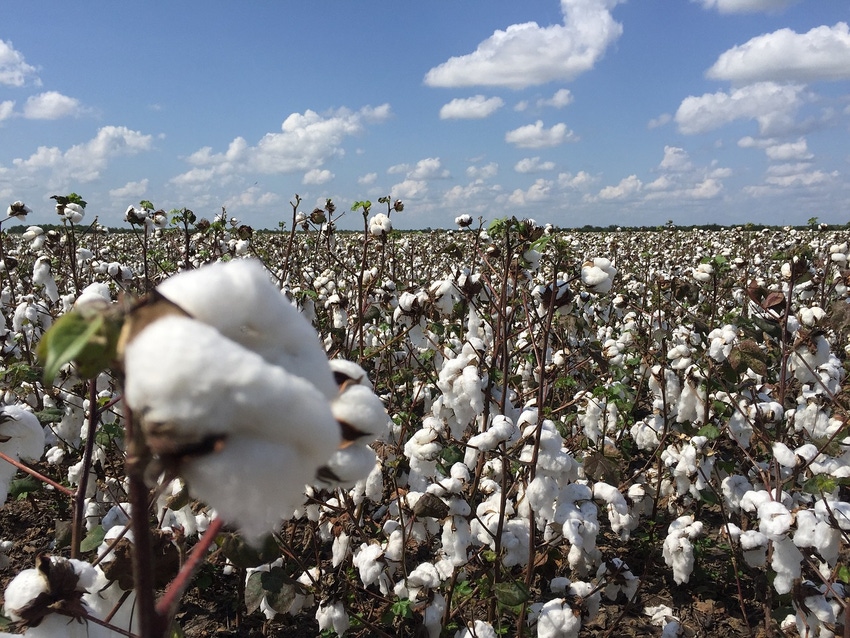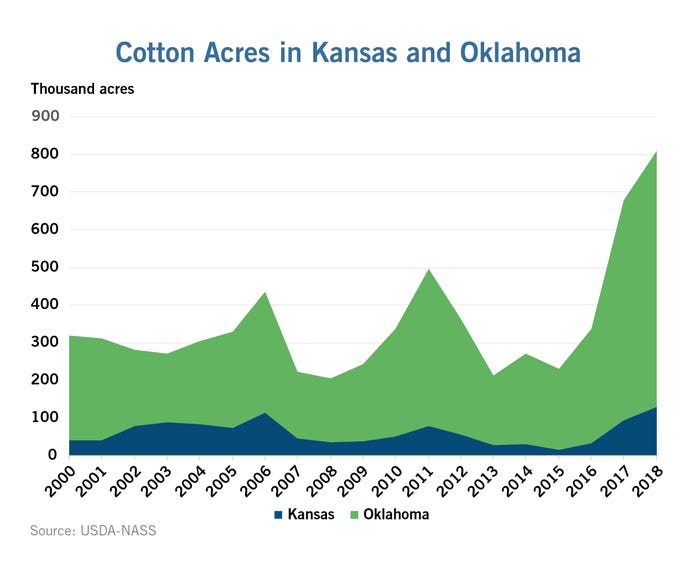Southwest turning to cotton amid drought, low grain prices
Kansas, Oklahoma and Texas increase planted area by 40%, 16% and 6%, respectively.

The U.S. Department of Agriculture’s annual “Prospective Plantings” report, issued on March 29, forecasts the planted area for all U.S. cotton in 2018 to rise to 13.5 million acres, a 7% increase from 2017. While this includes a significant increase in the largest cotton-producing state of Texas (up 6%), there has also been an apparent northern shift of cotton planting into Oklahoma and Kansas, which are projected to increase acreage by 16% and 40%, respectively.
While cotton infrastructure looks for new opportunities, CoBank’s Knowledge Exchange Division took a look at the underlying reasons for the shift and the future outlook for cotton in these areas.

“The projections of increased planting are sending signals throughout the cotton industry that more ginning capacity and storage capacity is needed,” said Ben Laine, a senior industry analyst with CoBank. “We are already seeing some cooperative gins in Kansas expanding capacity, sometimes doubling the previous year’s, and others in all three states are increasing storage capacity by upwards of 30%.”
While more cooperatives are considering capacity increases both in ginning and storage, the number-one question is the sustainability of the crop in these regions.
“However cotton is included in a crop rotation, the underlying infrastructure investments and the long-term economics compared to other crops show cotton is sustainable in these typically grain-dominated areas,” Laine said.
About the Author(s)
You May Also Like



